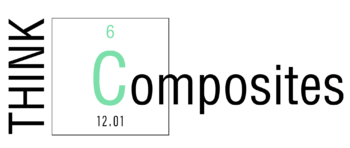
Definition
The quad laminate is the classical way of designing composite laminates. It is a selection of 0° plies, 90° plies and +/- 45° plies.
State of the art
There are many state-of-the-art rules for this type of laminates most of them being enforced in the aeronautic industry by the certification authorities and in-house rules. Here are listed 4 of them but the list is not exhaustive.
- Sub laminate construction
Most quad laminates are constructed from a sub-module of a given number of plies and repeat as needed.
- Symmetric stacking
The sub-laminate construction has to be a symmetric stacking to avoid warping during curing and also temperature and moisture changes during life of the structure.
- Balanced laminates
The sub-laminate are required to be balanced to avoid shear coupling. In this case it means that +45° plies have the same number as the -45° plies.
- Full family and ten per cent rule
The sub-laminate has to carry all 4 orientations with at least ten percent of each orientation inside the laminate.
Representation of the sub-laminate : plies or percentage ?
The QUAD laminate can be represented by its composition in percentage for each orientation
[0 x/ 90y/45z/-45z] and a total thickness t.
X = % of 0° plies
y = % of 90° plies
z = % of 45° plies with the obvious relation z = 1-x+y
but in real construction the number of plies have to be a whole number. This implies that all values of x and y cannot be resolved with a simple sub-laminate.
In example, the quasi-isotropic quad laminate can be given as
[0/90/45/-45]s 8 plies or also [0 25% /90 25%/45 25%/-45 25%]s
The graph below shows for quad sub-laminates with 4 to 12 plies, what are the achievable values of (x,y). It can be seen that the 10% rule creates a large zone eliminating many QUAD combinations. It is also important to see that inside the possible zone, QUAD is a discrete collection with a finite number of solutions and is not covering all the possible percentage of 0/90/45/-45
As an example a solution with 45%/35%/10%/10% (%age in each 4 directions) is not possible with 4 to 12 ply sub-laminates. It would require a 20 plies sub-laminate, which would give a total minimum thickness of 5 mm including the symmetry !
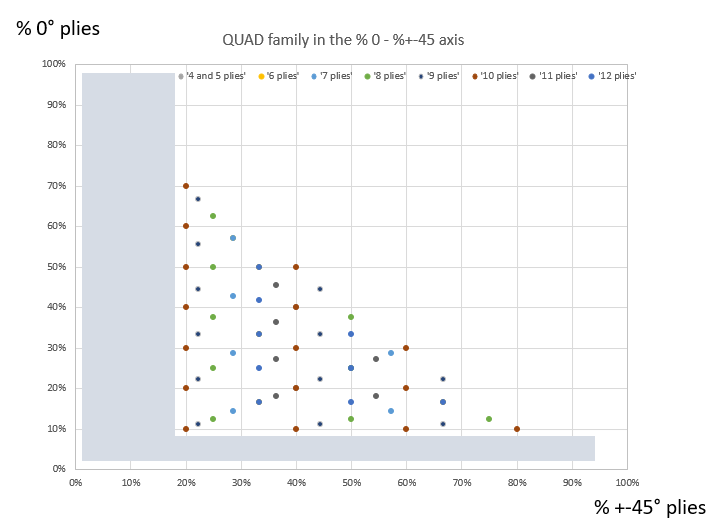
QUADS are a discrete collection of laminates. They do not cover the whole design space. DD is a continuous field and cover the whole spectrum of possibilities (see Double-double)
The staking sequence nightmare
QUAD has many stacking options for each sub-laminate. The number of possible stacking becomes extraordinarily large when the number of plies increase. From 12 for the 4 ply sub-laminate 0/90/45/-45 to thousands for a 12 ply sub laminates.
The values for the inplane stiffness is the same whatever the stacking sequence is but the bending stiffness Dij can vary with a very large scatter as seen below for the 4 ply sub laminates. It means that for construction in bending modes or buckling modes finding the optimum stacking sequence can be a nightmare for the designer.
Choosing the proper and optimum stacking sequence is almost impossible. !
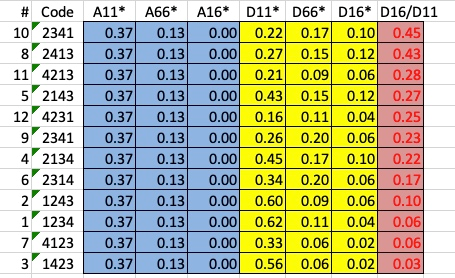
the code 1 for 0° , 2 for 90°, 3 for 45° and 4for -45°
The table shows the large scatter of the Dij depending of the stacking sequence of the laminate, for the simple 4 ply sub-laminate.
QUAD and DD have different design space. DD offer much larger options
There are 35 viable QUAD laminates up-to 10 ply thick and reduced by the 10 percent rule. If we look at their equivalent DD laminate (using Lam search 3.0) we can see that they cover only a small zone of the design space of DD. See fig below
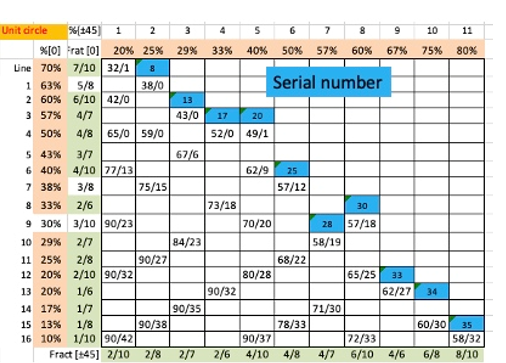
35 viable QUAD sub-laminates converted to DD
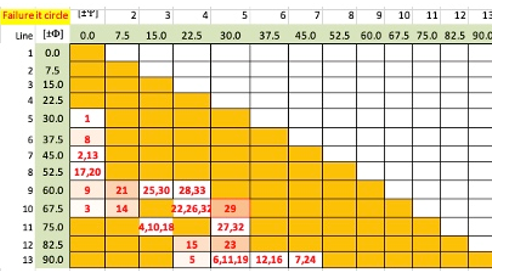
35 QUAD sub-laminates spotted in the DD field DD Only 20 out of 91 spaces or 22% of what DD can offer for the design of the laminate
